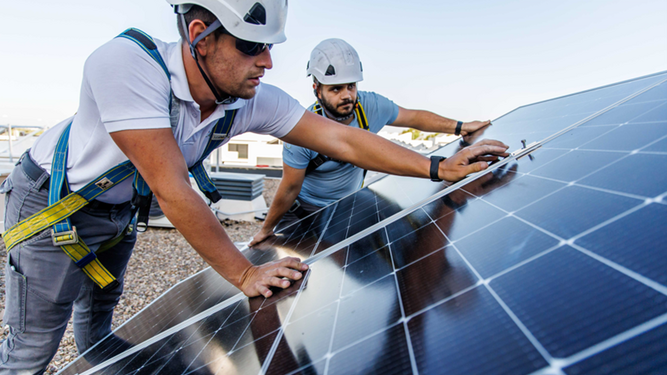Genera 2024: find new forms of economic stimulus own use that are more efficient, such as tax reductions on projects, reducing delays in the administrative management of projects and the homogenization of the 2,000 meters between generation and consumption in all installations. own useare essential measures.
The Spanish Photovoltaic Union (UNEF)the majority solar energy sector association in Spain, which already has 820 companies, has adopted the Day of self-consumption and energy communities at the fair Genera 2024with the aim of publicizing the These are the main obstacles that self-consumption and energy communities still face in Spain, as well as the solutions to be able to reverse them and continue to achieve the objectives set in the self-consumption roadmap.
This conference is contextualized in a moment stabilization of own consumption in our country. This is evident from data collected by the majority sector association, the industrial own consumption was the one that grew the most in 2023 with a new installed capacity of 1,020 MW (-13% compared to 2022), followed by the residential sector with 372 MW (-54% compared to 2022), the commercial sector with 291 MW ( – 42% compared to 2022) and finally the isolated one with 23 MW (-8% compared to 2022). This data represents a 32% decrease in growth rate compared to 2022 and an increase of 42% compared to 2021.


“The situation of own consumption in Spain is motivated by the loss, the perception of high energy prices by citizens, as well as the reduction in household purchasing power, as a result of the increase in inflation and the exhaustion of the intended aid within the Recovery Funds,” he ruled. José Donoso, general manager of An F.
Eight proposals to promote self-consumption in Spain
During the Day of Own Consumption and Energy Communities An Fthe trade association presented eight essential measures so that the self-consumption sector in Spain continues to consolidate:
- Extend the exemption from requesting access capacity to all installations that inject less than 15 kW into the grid, regardless of the installed capacity. This allows a large part of the energy that is currently lost in installations to be brought into the network.own consumption without surplus”.
- Expand the number of facilities that can benefit from simplified compensation to all facilities with an access capacity up to 450 kW. Everyone will allow this industrial self-consumerswith a rate of 3.0TD, can benefit from a surplus compensation.
- Increase the current power from 100 kW to 450 kW without deposit. So all that industrial self-consumers with the 3.0TD tariff, who install a power equal to your maximum consumption, can benefit from this simplified way.
- Extend the distance at which surpluses can be shared to 5,000 meters, and extend its application to all photovoltaic installations, not just on roofs.
- Promote the development of the figure of Self-consumption manager for the use of Collective self-consumption.
- Develop the regulatory framework for access capacity to a flexible electricity generation and consumption network, through the access specifications, to facilitate the connection of facilities with controllable generation and consumption.
- Apply a 0% VAT rate to panels and inverters intended for own use.
“He own use It remains profitable for both businesses and households, while also providing security and economic stability in the face of potential geopolitical crises. However, given the ambitious decarbonization targets we face in the coming years, we need new ways to achieve that economic impulse that is more efficientsuch as tax relief, following the example of countries such as Germany and the United Kingdom, which already apply 0% VAT on these projects, reduce delays in administrative project management and the homogenization of the 2,000 meters between generation and consumption in all facilities for self-consumption,” Donoso explains.

